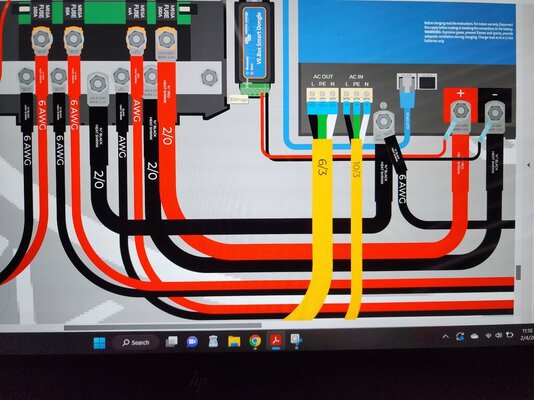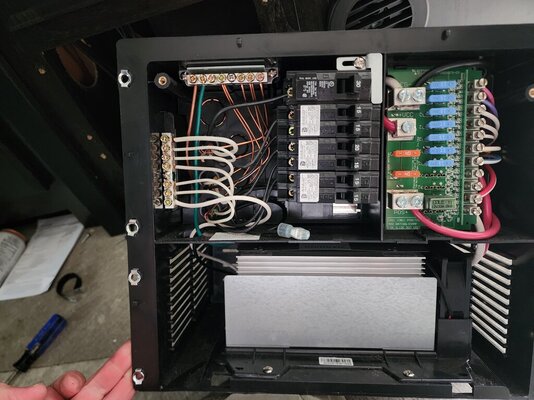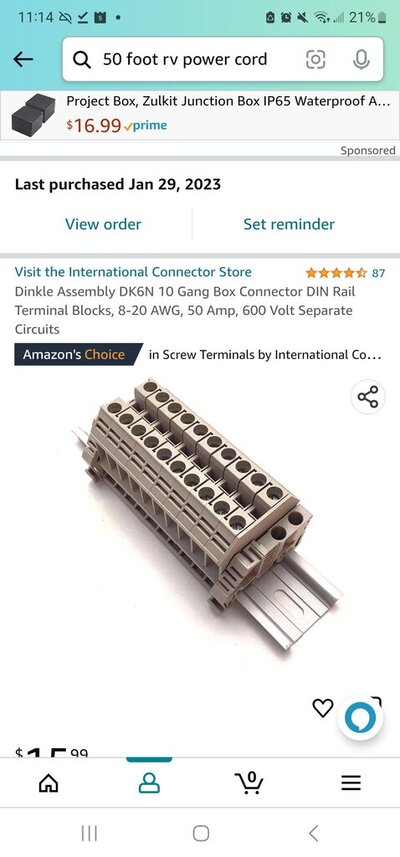chaostactics
Well-known member
So I'm putting in a Victron Multiplus and the wiring coming from the shore power inlet needs to be extended to reach it.*
The current shore power enters from the back of the RV and gets to my main distro/breaker panel midway through the trailer.
The multi plus is mounted in the front cargo passthrough.
I have run 10/3 wire (3 conductive wires and a ground) from the Multiplus to the main distro/breaker panel. And was planning on splicing it into the preexisting shore power wiring to feed the AC in on the multiplus. (Unhook shore power from the panel and send it to the multiplus, which will send AC to the panel via a new run of 6/3).
The problem is, is that the shore power supply to the panel is single strand 12/2 (two conductives and a ground, i.e. bare copper and black and white) while the line to be spliced to the Multiplus is black, white, green: L, PE, N.
So when I splice them together I have a 12/2 and a 10/3... How do I match up the wires?
*I am not putting in a new shore power inlet nor am I going to run all new wiring from the shore power inlet to the Multiplus.
**I DO NOT HAVE A TRANSFER SWITCH.
*** The wiring diagram is from explorist, I did not design it.
Multiplus wiring.

Main distro panel

Terminal connectors for splicing shore power to Multipus AC in.

The current shore power enters from the back of the RV and gets to my main distro/breaker panel midway through the trailer.
The multi plus is mounted in the front cargo passthrough.
I have run 10/3 wire (3 conductive wires and a ground) from the Multiplus to the main distro/breaker panel. And was planning on splicing it into the preexisting shore power wiring to feed the AC in on the multiplus. (Unhook shore power from the panel and send it to the multiplus, which will send AC to the panel via a new run of 6/3).
The problem is, is that the shore power supply to the panel is single strand 12/2 (two conductives and a ground, i.e. bare copper and black and white) while the line to be spliced to the Multiplus is black, white, green: L, PE, N.
So when I splice them together I have a 12/2 and a 10/3... How do I match up the wires?
*I am not putting in a new shore power inlet nor am I going to run all new wiring from the shore power inlet to the Multiplus.
**I DO NOT HAVE A TRANSFER SWITCH.
*** The wiring diagram is from explorist, I did not design it.
Multiplus wiring.

Main distro panel

Terminal connectors for splicing shore power to Multipus AC in.

